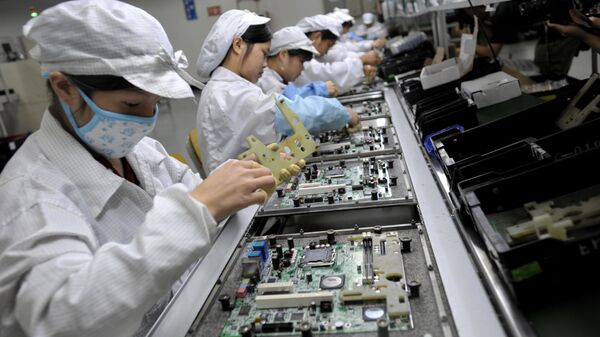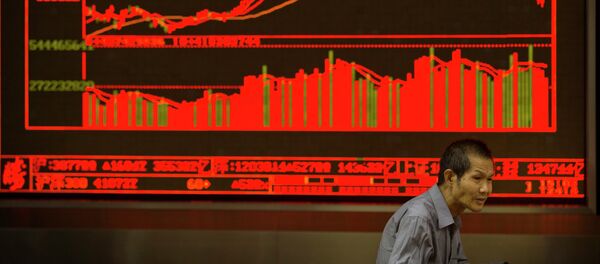Given China's emphasis on manufacturing, people may easily compare its strategy with US President Donald Trump's plan to bring manufacturing back to the US.
Some people are concerned about the impact of US manufacturing leaving China, worrying that high-end manufacturing will go back to the US while low-end industries go to Southeast Asia, but in fact that's not the case.
Generally speaking, China's share in the global manufacturing market is on the rise. The country's export value of manufactured goods accounted for 18.7 percent of the world's exports in 2015, up from 4.8 percent in 2000, while the US' share declined from 14.1 percent in 2000 to 8.4 percent in 2015.
In addition, the proportion of China's high-tech exports in world trade jumped from 3 percent in 2000 to 19.5 percent in 2015, while US high-tech exports fell from 16.8 percent to 9.5 percent in the same timeframe. According to the Asian Economic Integration Report released by the Asian Development Bank, China led in the export of low-tech goods with a 55.4 percent market share in Asia's exports in 2014, up from 21.1 percent in 1996.
At the current stage, China has already finished the One plus X scheme under the Made in China 2025 strategy, setting the direction and guidelines for the country's future manufacturing development from a strategic perspective. To evolve from "made in China" to "created in China," from fast manufacturing speed to good quality, from Chinese products to Chinese brands, from high-pollution, high-energy consumption industries to green sectors and from domestic enterprises to multinational enterprises and even global enterprises, China's manufacturing sector needs to make efforts in the following ways.
First of all, the manufacturing industry should improve innovation ability. By following "smart manufacturing" and "Internet plus" strategies, China should promote the upgrading of the manufacturing structure and strengthen the industry's overall competitiveness so as to occupy the new frontier in global manufacturing.
Second, with the implementation of the One Belt and One Road initiative, the manufacturing sector should also pay more attention to going out as well as introducing in. While continuing the study of the world's advanced technology and management experience, Chinese manufacturing enterprises should actively expand their presence around the world, making an example for the new globalization.
Finally, a strong manufacturing power cannot live without talents. With China's labor cost rising and demographic dividend disappearing, the country has to increase its supply of high-quality manufacturing talents to enhance industry quality and promote its development.
Nonetheless, we should not be too sensitive about the US' drive to bring back manufacturing. Instead we should fully respect the economic laws and actively respond to the complicated and changeable global political and economic situation while pushing forward with the strategy of building a strong manufacturing power.
This article originally appeared on the Global Times website






